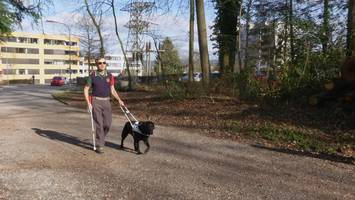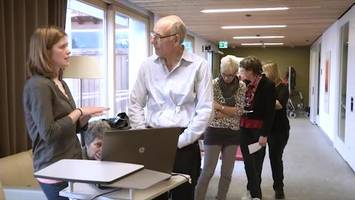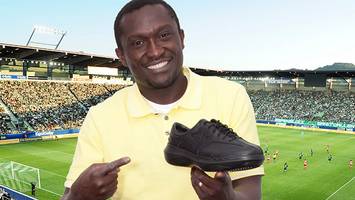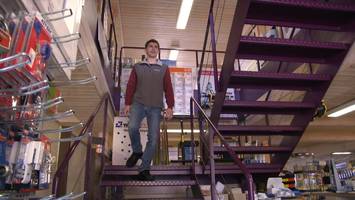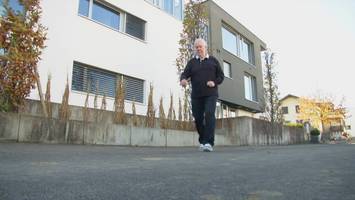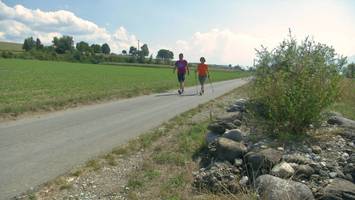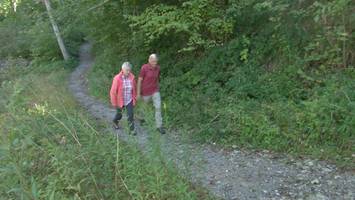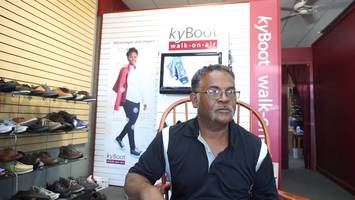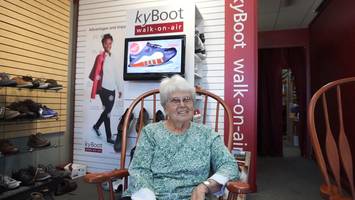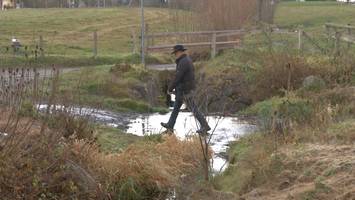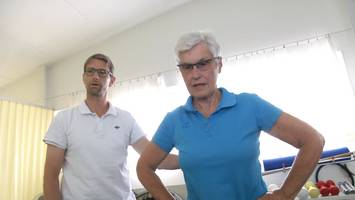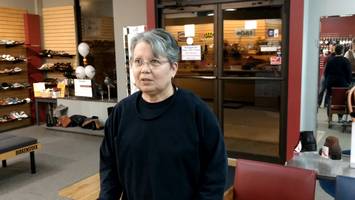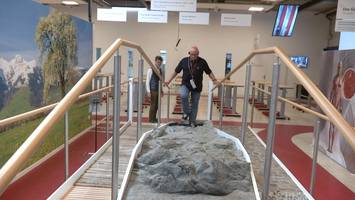Pain at the front of the foot
A natural rollover of the foot is possible in the kybun shoe/on the kybun mat and the foot can recover from the pain. The muscles and tendons are gently stretched and strengthened, and the joints mobilised.
Definition
Causes
Possible causes:
- disorders of the bones of the middle and front of the foot, the toe joints, the soft tissue and the toenails
- foot malpositions or weak foot musculature: ‘Flatfoot’, ‘forefoot muscle weakness’, ‘flattened transverse arch’, ‘splayfoot’
- weak connective tissue
- high heels
- narrow, sturdy shoes
- severe loading
- being significantly overweight
- neurological: ‘Morton’s neuroma’, ‘forefoot neuralgia’
Possible causes of front-foot pain in the kybun shoe:
- Initial reactions in the kybun shoe: overtaxing of the forefoot musculature or the transverse arch
- muscle tension: ‘clenching the toes’ (usually done unconsciously to stabilise the foot)
Long-term consequences
Conventional therapy
- orthopaedic shoes with broad toe box
- special insoles
- truss pads (elevation at the forefoot built into the shoe)
- injection of a local anaesthetic and/or cortisone treatment
- regular foot physiotherapy exercises
- therapy
- operation
The kybun principle of operation – being proactive
In the kybun shoe, your foot can move naturally in all directions, training the core, stabilising musculature of each foot equally and improving foot mobility. The foot becomes more robust and stable, and foot malpositions that have arisen due to weak musculature are improved or corrected completely. Only active, frequent foot training can counteract front-foot pain in the long term. Orthopaedic insoles provide only short-term improvement because they passively support the feet. They do not strengthen the feet; on the contrary, they continuously weaken the feet while overtaxing other joints. A well-trained foot musculature and good foot mobility are extremely important with all foot problems. For those suffering from Morton’s neuroma, the kybun shoe/kybun mat have the following effects on the body:
- The kybun shoe/kybun mat provide a challenge for the core foot musculature, leading to a correction/stabilisation of the arch. This relieves the nerve affected by Morton’s neuroma.
- Improved foot mobility creates more space for the affected nerves, which should decrease existing pain.
- By stimulating the foot sensors and foot sensitivity, the kybun shoe helps the nerves to recover from the stress (pressure).
Initial reactions
Specific initial reactions with front-foot pain:
Those with sensitive forefeet (which can result from splayfoot, for instance) or who wear orthopaedic, supporting insoles in their conventional shoes may have reactions in the beginning because the kybun shoe greatly challenges the forefoot musculature, which may become inflamed if not enough breaks are taken early on. The load has the most extreme effect when walking uphill because it is particularly great then. If the user is not yet accustomed to this, pain may develop at first, even if they have never had such a reaction before.
The pain indicates the body’s weakest point, providing valuable information.
In the beginning, as an alternative to taking breaks, we advise inserting an insole into the kyBoot that is slightly stiff in front and that prevents excessive movement in the front of the foot. These ‘forefoot stiffening’ insoles can be purchased from shoe shops and will probably solve these initial problems. Click here for the general initial reactions experienced by kybun mat and kybun shoe beginners: Initial reactions
In the beginning, as an alternative to taking breaks, we advise inserting an insole into the kyBoot that is slightly stiff in front and that prevents excessive movement in the front of the foot. These ‘forefoot stiffening’ insoles can be purchased from shoe shops and will probably solve these initial problems. Click here for the general initial reactions experienced by kybun mat and kybun shoe beginners: Initial reactions
kybun exercises
For information about the special kyBoot exercises or the basic kyBounder exercises , please click here: kybun exercises
The following adaptations to the standard implementation of interval walking are important for those suffering from Morton’s neuroma :
- avoid excessive strain on the forefoot (the arch is pushed down by a forefoot load)
- take shorter steps - make sure you perform the slow exercises a bit faster to avoid irritation
- alternate exercises as directed
Application tips
- For those with greatly flattened transverse arches, we recommend using stiff, thin insoles for the forefoot area in the kybun shoe if pain develops. This reduces the softness of the kybun shoe sole slightly and gives the front of your foot a little added support.
- If the hard insole for the front of the foot from a shoe shop does not improve things, we recommend alternating between wearing the kybun shoe and ‘normal, hard shoes with orthopaedic insoles’ as your ‘active shoe’. This allows your foot to recover from active training in the kybun shoe before front-foot pain develops.
- Be sure to maintain an upright body posture and foot position in the kybun shoe/on the kybun mat. Look straight ahead and correct any lateral/medial rolling in the kybun shoe.
- Your feet should be able to move freely in the kybun shoe! Shoe size and model can make a critical difference. It is normal to feel less stable in the kybun shoe than you would in ‘normal’ shoes at first. Take your time when trying the kybun shoe on; your local kybun specialists will be pleased to assist you.
Relax your toes in the kybun shoe/on the kybun mat (it is common to unconsciously clench them) - Roll forward naturally over the entire foot (from the heel to the push-off with the big toe).
- Avoid taking steps that are too long so as to ensure that the joints bear a more correct axial load, which is less taxing. This also makes it easier to balance on the kybun shoe sole.
- Some people feel too unstable in the kybun shoe. In this case, we advise you to try various kybun shoe models; some models have a higher cut and provide more stability. We also recommend the kybun shoe model with a lower rebound effect to these customers. It is a little wider in the mid-foot area, making you feel safer while walking (ask for advice in a specialised kybun shop).
- If you still feel too unsafe walking in the kybun shoe, we advise using the kybun mat. The kybun mat is available in three different thicknesses. This allows you to choose the thickness that is most comfortable for you (the thicker, the less stable, and the more intensive the training).
You can also hold on to a fixed object if you need additional support when using the kybun mat.

